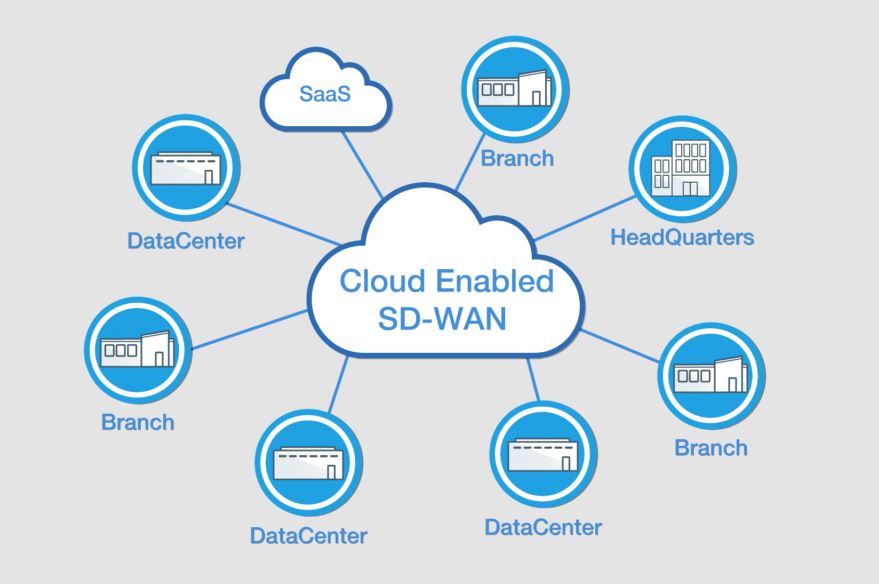Collaboration is a major part of getting things done in modern business. The better we can collaborate, the more we can achieve. For this reason, more and more businesses are turning to UCaaS (Unified Communications as a Service) to ensure their teams are able to reap the benefits of tools such as video conferencing, instant messaging, shared desktop, and VoIP in a way that is economical, scalable, and flexible.
Since UCaaS is cloud-based, this creates a bit of a paradigm shift for enterprises used to hosting their telecommunications infrastructure strictly on-premises. The use of UCaaS often calls for a focus on WAN optimization to help enterprises get the most out of their investment and avoid unnecessary service outages as a result of WAN connectivity issues.
In this piece, we’ll review some of the common issues that can impede UCaaS performance, why legacy WAN solutions are not ideal to address these issues, and how SDWaaS is the ideal WAN optimization solution for UCaaS.
Problems that hurt UCaaS performance
While poor network performance can theoretically hurt any networked application, many applications offered in UCaaS suite are particularly sensitive to network performance because they are real time applications. If you’ve ever experienced choppy video on a Skype call or robotic voices when using VoIP, you should have an idea of what can go wrong. In these real time applications, data has to get to its destination reliably and quickly. This means that packet loss (when a network drops data) and latency (delays in the transmission of data) can be a disaster for UCaaS.
Blackouts (complete loss of service) in a given area can also lead to significant service disruptions for UCaaS applications. If service goes out and there is no rapid failover in place, any active sessions at that location will be lost.
Additionally, like any other addition to your network, UCaaS inherently increases your attack surface and must be adequately protected from security threats. Failure to do so not only puts your UCaaS applications at risk, but your entire network infrastructure.
From a root cause perspective, there are a number of things that can contribute to the various network connectivity issues that impact UCaaS performance ranging from distance to network congestion in the “last mile” to security breaches and everything in between. When you make the choice to leverage UCaaS, you also need to select a WAN connectivity solution that helps you account for all these variables.
Where MPLS and DIY SD-WAN fall short
MPLS (Multiprotocol Label Switching) is useful for providing high-performance, reliable connectivity between two endpoints (e.g. a corporate headquarters and corporate datacenter). However, in general MPLS simply isn’t flexible enough to affordably and effectively handle high-volume cloud workloads. MPLS bandwidth is costly, and cloud-bound traffic is often backhauled to corporate datacenters before being routed on to its destination, adding additional latency to connections. This lack of cloud-friendliness is what makes MPLS suboptimal for UCaaS.
On the other end of the spectrum, appliance-based Do-It-Yourself SD-WAN can easily leverage public Internet bandwidth which is affordable and flexible, but does not deliver the performance reliability UCaaS requires. When critical business is being conducted using real time UCaaS apps, gambling on the public Internet only is not ideal.
How SDWaaS optimizes WAN performance for UCaaS
Cloud-based SDWaaS is able to deliver the WAN performance UCaaS needs because it not only offers the flexibility and economical bandwidth you expect from SD-WAN, it also has an SLA-backed global private backbone with Points of Presence (PoPs) across the globe. This means that SDWaaS can offer performance and reliability that DIY SD-WAN lacks while also delivering the flexibility and cloud-friendliness MPLS fails to.
Backed by multiple Tier 1 Internet Service Providers, the global private backbone that is inherent to SDWaaS helps minimize latency issues. Additionally, features like Forward Error Correction (FEC) help reduce packet loss and improve the performance of real time applications.
Further, self-healing and failover features help SDWaaS maximize uptime in spite of the myriad of issues that can arise in the “last mile” between an ISP and an end user. By monitoring network performance, SDWaaS can automate responses to blackouts and brownouts (degraded, but not lost, service) and failover when appropriate. Further, features like Quality of Service (QoS) enable traffic shaping that allows enterprises to put a priority on latency sensitive traffic (e.g. VoIP and video conferencing data) in the event network congestion limits available bandwidth.
Finally, SDWaaS helps ensure the security of UCaaS as well as all other applications within the WAN by integrating a variety of security features directly into the network. Threat detection, Next-generation Firewall (NGFW), and Intrusion Protection Systems (IPS) help to minimize exposure to threats that could take down UCaaS applications and compromise critical data.
SDWaaS and UCaaS are an ideal fit
Given the demands of real-time high-bandwidth apps like those used for high-resolution videoconferencing and the cloud-based nature of UCaaS, SDWaaS (SD-WAN as a Service) is the ideal WAN optimization solution. By offering high-performance, reliable, and secure connectivity, SDWaaS helps enterprises maximize their UCaaS performance.

